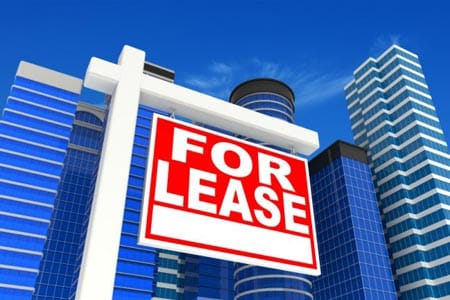When renting business related property it is important for both landlords and tenants to understand the relationship they are entering into and the rights and obligations that they each have. The document that governs this relationship is usually a commercial lease.
SO WHAT IS A COMMERCIAL LEASE?
A lease is a legally binding contract that gives you certain rights to a property for a set term. A commercial lease is used when leasing property primarily for business use. You should never sign a lease without understanding all of its terms and conditions. If you don’t understand what you are agreeing to you could experience serious financial and legal problems. It’s a good idea to ask your lawyer to explain each clause of the lease to you. Your lawyer can give you legal advice, draft new clauses and help you negotiate the terms and conditions that suit you.
IMPORTANT ISSUES TO CONSIDER WHEN ENTERING INTO A LEASE.
A commercial lease will usually contain terms dealing with items such as:
Rent: How much is the rent and when is it due? The amount of the rent will usually be calculated based on the area of the premises. This may not always be as simple as it sounds if the shape of the property is irregular or the area includes a lift, more than one floor, an outdoor area or interior walls.
Rent increases: Rent will usually increase annually during the term of the lease, with increases determined by a fixed percentage, market valuation rises or CPI increases. It is common for fixed increases to occur during the term of a lease and for a market review to occur at the expiry of the initial term and each option period.
Security deposit: The landlord will usually ask for some form of security from the tenant in case the tenant defaults on their obligations (eg. not paying rent). The security is usually for an amount equal to 3-6 months’ rent and is by way of bank guarantee or a deposit bond. The lease should also specify the terms regarding its return. If the tenant is a company then personal guarantees from the company’s directors may also be required.
Term of the lease: The lease should set out the length of the lease and any options to renew the lease and any terms relating to the renewal. A landlord will generally want a longer initial lease term (typically 3, 5 or 10 years) whereas the tenant is likely to want a shorter period (1-3 years).
Option to renew: An option allows the tenant to continue leasing the property on similar terms at the end of the period of the lease for a further defined period and rent (subject to any review). An option gives the tenant the ability to make longer term plans for their business. Complying with the procedure and timing for exercising the option is critically important.
Improvements: A lease should address what improvements or modifications can be made to the property, who will pay for the improvements and whether the tenant is responsible for returning the property to its original condition at the end of the lease. It is common for a tenant to have to re-paint the property at set periods, including at the end of the lease. This can be very expensive and the extent of the required re-painting should be clearly set out. It’s important to remember that old buildings may need lengthy and expensive modifications to comply with council and building regulations, for example regarding signage, fire exits and staircase rails. Non-compliance creates legal risk and may invalidate your insurance.
Description of the property: The lease should clearly describe all of the property being leased, including bathrooms, common areas, kitchen area and parking spots. A plan of the property should also be included.
Signage: Any restrictions on putting up signs, say that are visible from the street, will be included in the lease. Also, check local zoning regulations to determine whether other limitations apply.
Use of the property: Most leases will include a clause defining what the tenant can do on the property (eg. what type of business). A tenant should ask for a broad usage clause just in case the business expands into other activities. Ask your local council if your business can operate in your desired location. Also consider the council’s development plans for the area.
Outgoings: The lease will set out who is responsible for costs like utilities, property rates and taxes, insurances and repairs. Question who is responsible for any common areas. Insurance: You should contact your insurance company and discuss the clauses referring to insurance.
Exclusivity clause: This is an important clause for retail businesses renting space in a commercial complex. An exclusivity clause will prevent a landlord from renting space to a competitor.
Assignment and subletting: A tenant should maintain the right to assign the lease or sublet the space to another tenant. Usually the tenant is still ultimately responsible for paying the rent if the business fails or relocates, but with an assignment or sublet clause in place the business can find someone else to cover the rent.
Maintenance and repair: The lease should clearly set out who is responsible for maintaining or repairing the property and the fixtures and fittings during the term of the lease. Termination: The circumstances under which the lease will be terminated should be set out in detail. Costs: The landlord may want the tenant to pay the costs of preparing the lease, however these costs can no longer be passed on to the tenant for retail leases (under the below mentioned Act).
Retail lease or general commercial lease? The Commercial Tenancy (Retail Shops) Agreements Act 1985 has specific legislation relating to retail leases (that fall within the definition in the Act). This legislation is designed to promote fair leasing arrangements, improve communication and provide access to low cost dispute resolution for the retail industry. The question of whether a lease is a “retail” lease is not up to you, it is determined by reference to the legislation. For a new retail lease the landlord is legally required to give the tenant:
- a written lease;
- a disclosure statement; and
- the Tenant Guide, which gives notice of some of the tenant’s rights and obligations and some commercial matters that the tenant should be aware of.
The disclosure statement outlines important information about the lease. It must be in the prescribed form and contain a statement notifying the tenant that independent legal advice should be obtained. It would also normally include details about:
- the term of the lease;
- whether there are options for further terms;
- the occupancy costs for leasing the premises (including rent and any outgoings);
- specific information for shopping centre leases;
- the tenant’s fit out obligations; and
- if there are any relocation or demolition clauses.
Conclusion Although many of the terms of a commercial lease are fairly standard, it is important that you fully understand your rights and obligations, especially the provisions that relate to retail leasing. It is a good idea to ask your lawyer to explain what each clause in the lease means and to get their assistance in negotiating the terms and conditions that suit you. To find out more about commercial leases or any property law matter call us on 08 93753411 today.

















